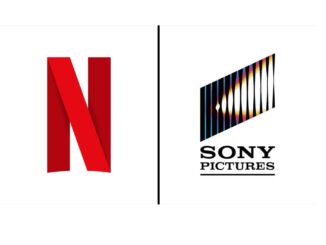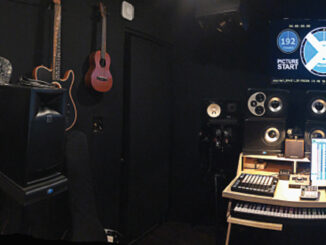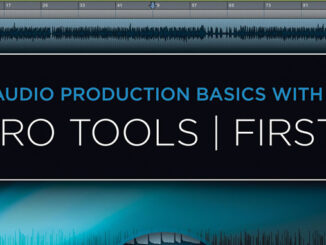
by Mel Lambert • photos by Gregory Schwartz
“My goal is to establish a workflow that keeps the creative process moving forward.”
– Scott Gershin, Supervising Sound Editor
It is often considered that necessity is the mother of invention. For the motion picture industry, that might be modified to read “Emerging technologies are the mother of invention.” In other words, how we work, and the creativity that results from these endeavors, are highly dependent upon the palette of available picture editorial, sound editorial and re-recording mixing tools.
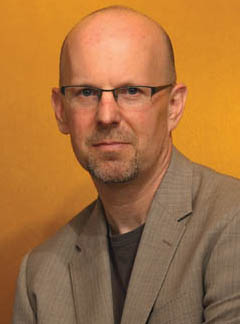
“As one of the world’s largest independent post-production sound companies, it is important for us to provide a selection of service offerings compatible with the workflows requested by our clients,” says Bill Johnston, senior vice president of Engineering and Technical Services for CSS Studios, a consortium of post-production sound facilities in Los Angeles and New York, including Todd-AO (Hollywood, Santa Monica and Burbank), Soundelux, Modern Music and the Manhattan-based Sound One. “Similarly, it is also important for us to have a perspective on which style of service provides the optimal level of creative expertise, the most complete soundtrack and the best value to our customers.
“We go to great lengths to secure the best possible creative talent and technical environments for our sound editorial and mixing facilities, and to pair each unique project with a customized set of creative and technical resources,” continues Johnston, who is also a Guild member. “In addition, however, our role must also be to listen to the input we receive from our creative partners as we collaborate on an acceptable approach to completing the soundtrack for any project. A key factor in our success continues to be our versatility and our ability to nimbly accommodate all situations.”
The feature film stages at Todd-AO are equipped primarily with Euphonix Systems 5 digital consoles, according to Johnston, while the television re-recording stages feature a range of Avid ICON control surfaces. “ProTools offers a lot of creative functionality for editing dialogue, effects and music tracks,” he adds. “And the majority of our editorial suites within Soundelux and Modern Music feature Avid ProTools workstations. We use our ICON stages [with ProTools DSP cores] for television re-recording, but for our motion picture clients we have implemented, via Euphonix, a hybrid configuration control through the Eucon protocol.”

Johnston cites several aspects of ProTools’ functionality that can impede its application as an engine for traditional re-recording, including limited buss automation and a lack of a complete monitoring environment, which he says is “better handled on other consoles.” He is quick to add, however, “In the hands of the right creative personnel, the power of the ProTools-integrated environment can be a great benefit to the client. The specific technology, however, is not always the main focus. The goal at CSS Studios is to provide a toolset that matches the workflow needs of the creative talent and the clients.”
Soundelux supervising sound editor Scott Gershin, MPSE, who just finished the recent Charlie St. Cloud with director Burr Steers and picture editor Padraic McKinley, likes to organize his projects and ProTools sessions in a way that best supports the filmmaking process. “We use our servers to quickly communicate with our clients and all of our facilities, creating the feeling and dynamics of being in a virtual facility,” he explains. “We have the ability to support the picture department while our clients are on the other side of town––or even in different countries—yet in a way that is similar to being down the hall.”
Having virtual access to the studios’ entire creative staff allows Gershin to accomplish tasks that just a short time ago weren’t possible. “I did a project in London, while our Foley team was doing pick-ups in LA—and I had it on the dubbing stage within 15 minutes,” recalls Gershin. “The same holds true for shooting ADR, where many a time we have shot a last-minute line of ADR in our Santa Monica facility, sent it to the editors in Hollywood, and within an hour, had it ready to mix when the director got back to the stage in Hollywood.”
Regarding file formats and sample rates, Gershin prefers to capture sounds at the highest possible resolutions––at least 96 kHz/24-bit or even at 192 kHz/24-bit, especially when the sound has potential for serious pitch manipulation. “I like to record my Foley at 96 k/24, cut it and then convert to 48 k/24,” he says. “I find that it sounds better to record at higher sample rates and then convert down, rather than recording at 48k straight.”
On the dubbing stages, he likes to collaborate with the mix team to assemble the right number of ProTools systems to best handle the needs and flow of the show. “Whether that means a couple of ProTools systems, or nine or ten, depends on what it takes to get the job done with the most flexibility and speed,” Gershin says. “I do a lot of projects that have intense CG and the picture is in a constant state of change. So, I’ll categorize the systems in a way that allows sessions to be modified without much disruption for the mix. I can take offline a ProTools containing a category that needs to be updated due to new CG and picture changes, do a quick update and then bring it back online without disrupting the flow of the mix.”

On Hellboy 2, Gershin and his team used nine ProTools systems in order to handle the large number of weapons, creatures and other ideas derived from the imagination of director Guillermo del Toro. “While we didn’t try to max out the voices and outputs of each system, we were able to organize the tracks in a way that was easy for the mixers and easier to conform to the latest CG change,” Gershin recalls. “That resulted in a workflow that allowed mixers Mike Prestwood Smith and Michael Keller more time to be creative with less time spent on logistics.”
Supervising sound editor Mark Mangini, MPSE, utilizes an ICON-based ProTools system. Depending on the needs of the project, as determined by the sound team, these elements can be delivered with built-in pan, level and plug-in settings to a traditional mix environment for linear recording or continually leveraged and expanded. “I like to retain everything as a virtual mix for as long as possible, including work the editor has done in Avid,” Mangini of Soundelux stresses. “In this fashion, the final mix is merely an extension and continuation of all the work that has preceded it. Philosophically, this is the case in all mixing, but in the virtual mix world, the first day of pre-dubs and finals pick up exactly where you left off the last day of the last temp. This approach is incredibly efficient and respects all the hard work and audio decision-making that got you there.”
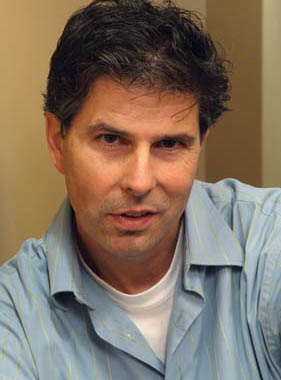
During picture editing for Unstoppable, director Tony Scott’s new film scheduled for a November release, it was important for sound to be delivered to the Avid Media Composer as the picture edit evolved, according to supervising sound editor Mark Stoeckinger, also of Soundelux, who worked most recently on Robin Hood, Law Abiding Citizen and Star Trek. The cutting room requested an Avid D-Command control surface system and Genelec surround sound monitoring “so that re-recording mixer Beau Borders could develop a 5.1 audience preview mix,” Stoeckinger explains. “The mix consisted of 16 channels of OMF media, which also included picture department sounds as well as sounds the sound editors had provided. This added up to roughly three edited dialogue tracks, up to 12 effects tracks and two production music tracks, some of which were split and organized for easier mixing. Operating in this virtual mode allowed the mixers to begin working on the film early on in this ‘pre-temp’ period and to contribute and establish concepts that would be part of the final mix, which will be completed at Todd-AO.”
Stoeckinger is convinced that the recent purchase by Avid of console-maker Euphonix will offer a number of additional advantages. “EuCon, the bi-directional control protocol developed by Euphonix [to command attached workstations and DSP engines from its System 5 control surfaces], will offer more sophisticated control than the slower and less featured HUI protocol developed by Mackie and Avid/Digidesign to control ProTools systems. But OMF translation between Avid Media Composer and ProTools can be a nightmare,” he says, citing with file-naming incompatibilities and other anomalies that can be costly, time-consuming and frustrating. “On Unstoppable, Avid AAF outputs were rarely representative of what was actually in the Avid, and we frequently needed whole channels of the OMF bounced to a single continuous file for accuracy. It would also be nice to be able to edit Euphonix automation data in ProTools as sessions are conformed. Any time that files, media or data need to be converted, translated or re-lined, there is an opportunity to do things better.”
Johnston agrees that within the editorial environment, ProTools’ database handling capabilities leaves something to be desired. “We need a DAW to truly organize its database of sounds located across several volumes. For example, if we copy session information and companion sound files from drive to drive, it would be useful if the revised ProTools sessions linked to the new or changed material, rather than having to recover the full list of files. We would like to simply copy what we need for updates and changes; it would make our life a lot simpler.”



